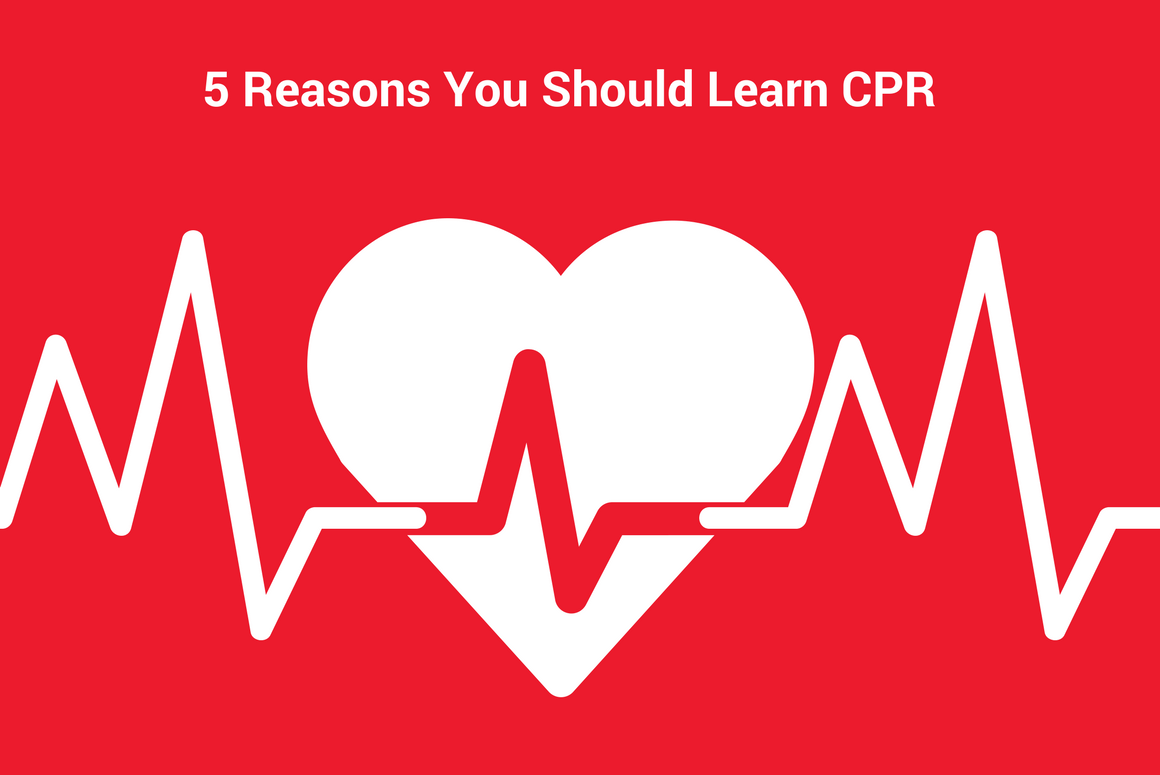CPR (cardio pulmonary resuscitation) is one of those skills that can serve you in any situation for life. Once you know it you’ve given yourself a remarkable gift. You’ve also given those around you peace of mind that, if someone were to collapse nearby and stop breathing, you could step in to save their lives while you wait for paramedics to arrive.
While that might be reason enough for you to learn this lifesaving skill, we’ve put together 5 more for you to read through, and hopefully help you decide that CPR is a skill worth having!
It’s Easy to Learn
CPR doesn’t require years of medical training to learn. In fact, it most often takes a single class through a certified organization, like American Red Cross (US) or St. John Ambulance (Canada), that will train you in the technique. While you can also learn from online resources, including videos, attending a class gives you the opportunity to ask questions and ensure your technique is correct before you use it on anyone.
For most of us, learning the technique once is all that’s needed. For others, their professions require them to be certified in CPR (often accompanied by AED training and First Aid), so a class is necessary to ensure you have the proper paperwork to confirm your certification, and means you should re-certify every two to three years.
Increased Chances of Survival
There are more than 356,000 out-of-hospital cardiac arrests annually in the United States, and nearly 90% of them are fatal [Source: Sudden Cardiac Arrest Foundation]. That’s a staggering number and one that can be lessened by having more people trained in CPR techniques and the use of AEDs, who can intervene while waiting for emergency medical services to arrive.
Once the heart stops beating, it prevents oxygen from getting to the brain which can be devastating in a very short period of time. Performing CPR provides oxygen to the brain and other vital organs to give the patient the best chance of recovery after EMS takes over.
Increased Confidence
Being faced with an emergency medical situation can be terrifying for anyone, especially for those without training as they are hesitant to help. While these emergencies are always unexpected, with CPR training, you gain the skills and knowledge necessary to perform CPR and use an AED with confidence, and to make good decisions that can help someone in distress.
During an emergency, it’s often those people near the victim who provide assistance before EMS arrives, and with training, you’re prepared to use life saving techniques and drastically improve outcomes for patients long-term.
Save Someone You Care About
Did you know that almost 70% of Sudden Cardiac Arrests (SCA) occur at home? [Source: Sudden Cardiac Arrest Foundation]. That means that you’re more likely to use your CPR skills to help someone close to you, like a friend or family member, than assisting a stranger. Many people assume that SCA only happens to the elderly or sick, but it can affect anyone as a result of heart abnormalities, external causes (drowning, trauma, electrocution, drug overdose etc.), or medical causes such as inflammation of the heart muscle due to infection.
While the average SCA victim is 60 years old, it affects people of all ages, including children and teens. More than 7,000 youth under the age of 18 experience SCA each year in the US. There is no age limit when it comes to who CPR can help, and it’s a great idea for new parents and caregivers of children to learn infant and child CPR, as there are some differences.
You Get to Use Lifesaving Technology
With the invention and improvement of AED’s (automatic electronic defibrillator), training for them is often included with CPR and First Aid. AEDs are portable machines, found in most public places, and are used to deliver an electric shock through the chest to the heart, to re-establish a normal heart rhythm.
Because AEDs are designed to be used by the public (non-medical personnel), they make it easier for a bystander to provide care to a person in distress. While training is recommended before using one, AEDs use a computer system to detect a heart rhythm and won’t shock unless one is needed; they also provide audible prompts that can guide even a first-time user. If you’re interested in learning more about the use of an AED, check out these Guidelines.
Whatever your reason for choosing to learn CPR, it’s always a good decision, and you can even get together with family and friends for your training so that you are all better prepared for unexpected emergencies.
Terms and Conditions
All content provided on this blog is for informational purposes only. The owner of this blog makes no representations as to the accuracy or completeness of any information on this site or found by following any link on this site. The owner will not be liable for any errors or omissions in this information nor for the availability of this information. The owner will not be liable for any losses, injuries, or damages from the display or use of this information. This policy is subject to change at anytime.

